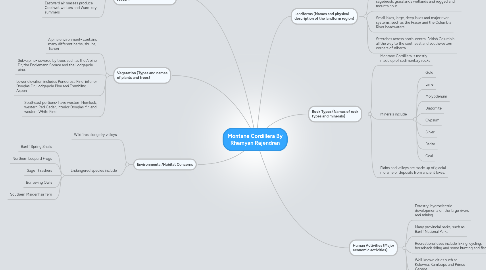Montane Cordillera By Rhamyan Rajendran
da Rhamyan Rajendran


1. Climate (Description of precipitation and temperature by season)
1.1. Precipitation in higher elevation range from 1,300mm and 2200mm, Northern and interior parts of the Montane Cordillera receive 500mm to about 800mm and about 2000 mm in the southern portions
1.2. Eastward air masses produce Cool wet winters and Warm dry summers
2. Vegetation (Types and names of plants and trees)
2.1. Alpine environment- contains many different herbs, shrubs, lichen
2.2. Sub-alpine- covered by trees such as the Alpine Fir, the Englemann Spruce and the Lodgepole pine.
2.3. Lower elevation includes Ponderosa Pine, interior Douglas Fir, Lodgepole Pine and Trembling Aspen
2.4. Southeast portions- have western Hemlock, western Red Cedar, interior Douglas-fir, and western White Pine
3. Environmental/Habitat Concerns
3.1. Wildfires along dry valleys
3.2. Endangered species include
3.2.1. Banff Spring Snails
3.2.2. Northern Leopard Frogs
3.2.3. Sage Thrashers
3.2.4. Burrowing Owls
3.2.5. Southern Maidenhair fern
4. Landforms (Names and physical description of the landform region)
4.1. 473,000 square kilometers
4.2. Varies between alpine tundra, dense forests to dry sagebrush, grasslands wetlands and rugged and mountainous
4.3. Small lakes, large, deep lakes and major river systems, such as the Fraser and the Columbia River headwaters
4.4. Stretches across north-central British Columbia all the way to the southeast and southwestern corners of Alberta.
5. Rock Types (Names of rock types and minerals)
5.1. Montane Cordillera is mostly made up of sedimentary rocks
5.2. Minerals include
5.2.1. Gold
5.2.2. Lime
5.2.3. Molybdenum
5.2.4. Diatomite
5.2.5. Gypsum
5.2.6. Silver
5.2.7. Barite
5.2.8. Coal
